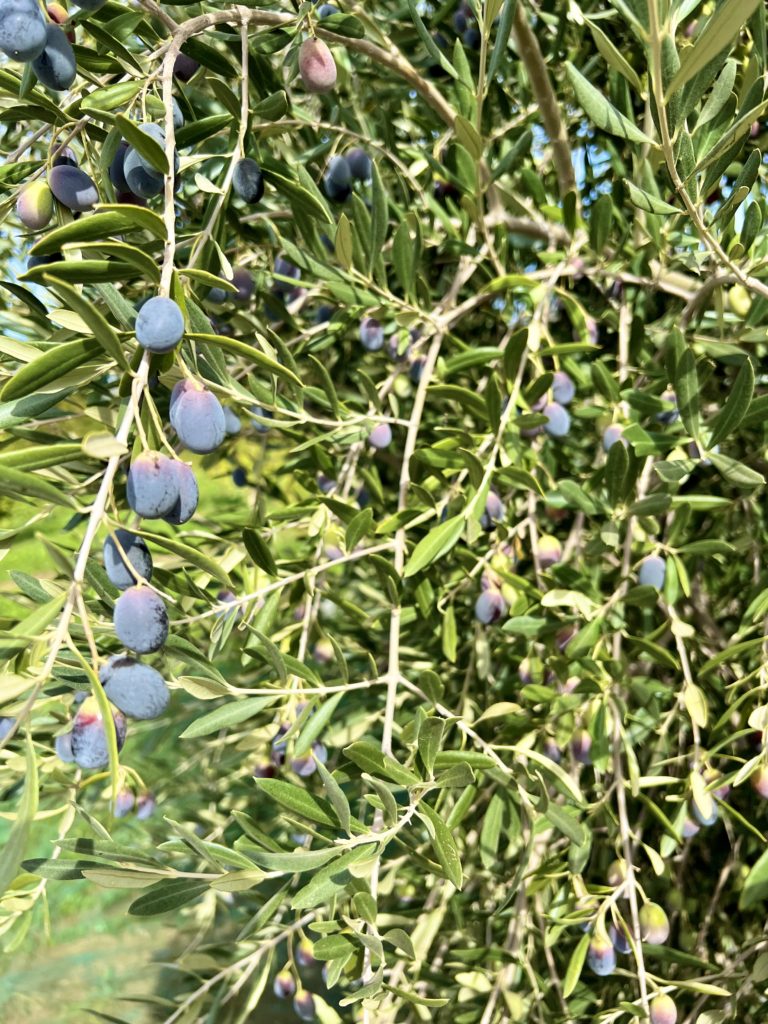
Wow – it’s already the end of October! Time is flying. The days are getting shorter and it’s getting a little chilly, at least in the mornings; it was in the low forties a few mornings last week. It’s still been warming up to the 70s during the day, but that won’t last for long.
Friday was one of those days that started off cool. It also was our olive harvest day! Almost everyone headed out in two teams to rake, pull, and whack all of the olives (green and black) off the trees and they warmed up fast. It’s a big effort and requires a lot of people. There’s a reason that many farms use machines to do this work!
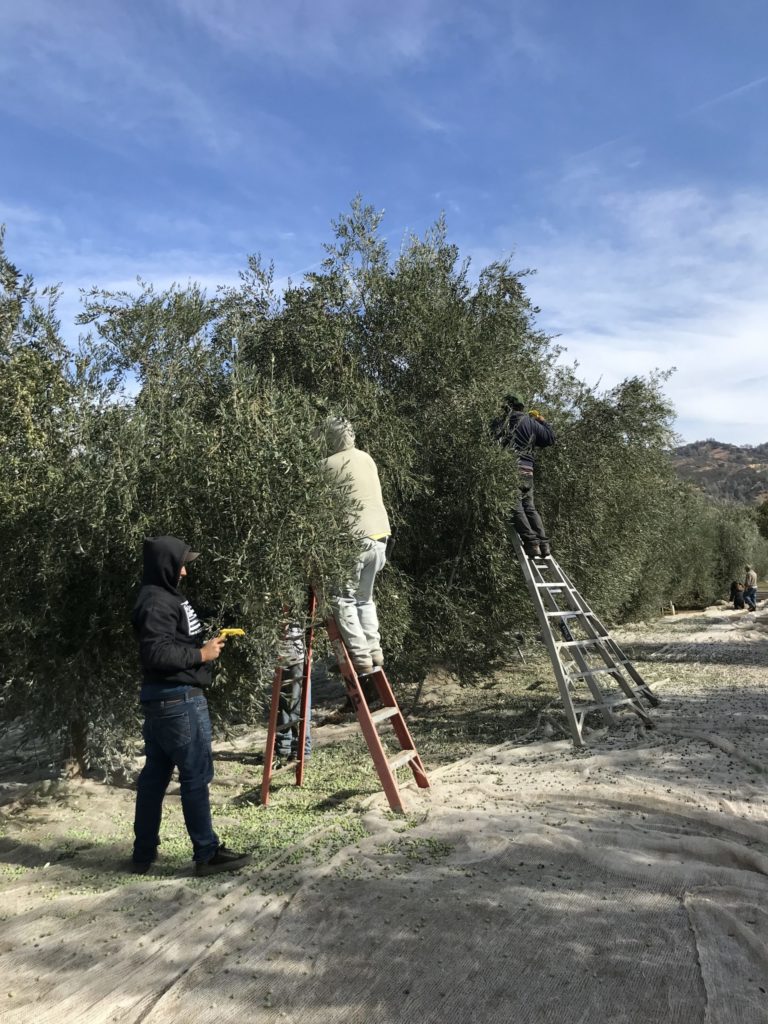
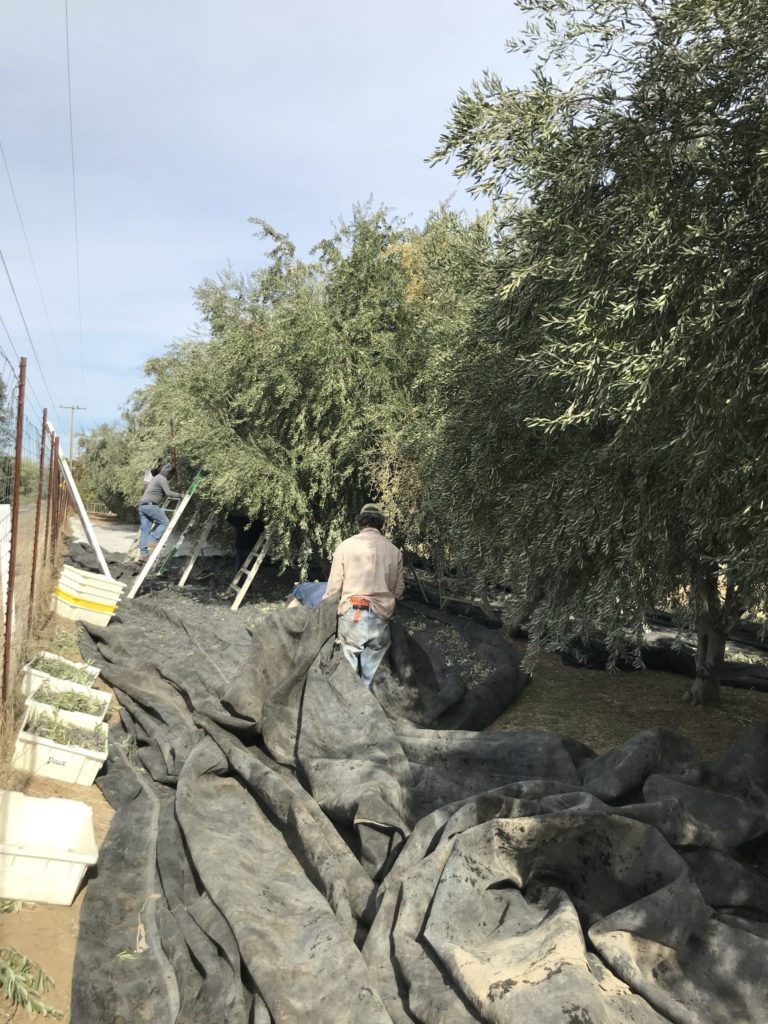
Olives are alternate bearing trees, meaning they alternate between high production and low production years. Last year was a light harvest year; we harvested five tons total and did it all in one day. We harvested five tons on Friday and Andrew estimates that we’re about 40% done, with our second day tentatively scheduled for later this week. It’s interesting to compare trees and different areas of the farm. We have a different types of olives, there are trees of different ages/heights, and different areas of the farm received different amounts of irrigation. Trees right next to each other can have very different ratios of black to green olives, or big disparities in the amount of fruit on a tree, and the larger, older trees that got the least water had really small fruit, with some looking a bit dry.
Harvesting olives is a race against time; olives are highly perishable once harvested and need to be turned into oil as soon as possible, within a few hours. All of Friday’s harvest was brought down the road to Seka Hills in Brooks on Friday afternoon to be crushed and turned into oil, yielding 120 gallons. This oil needs to settle for a little bit and then will be bottled up to sell.
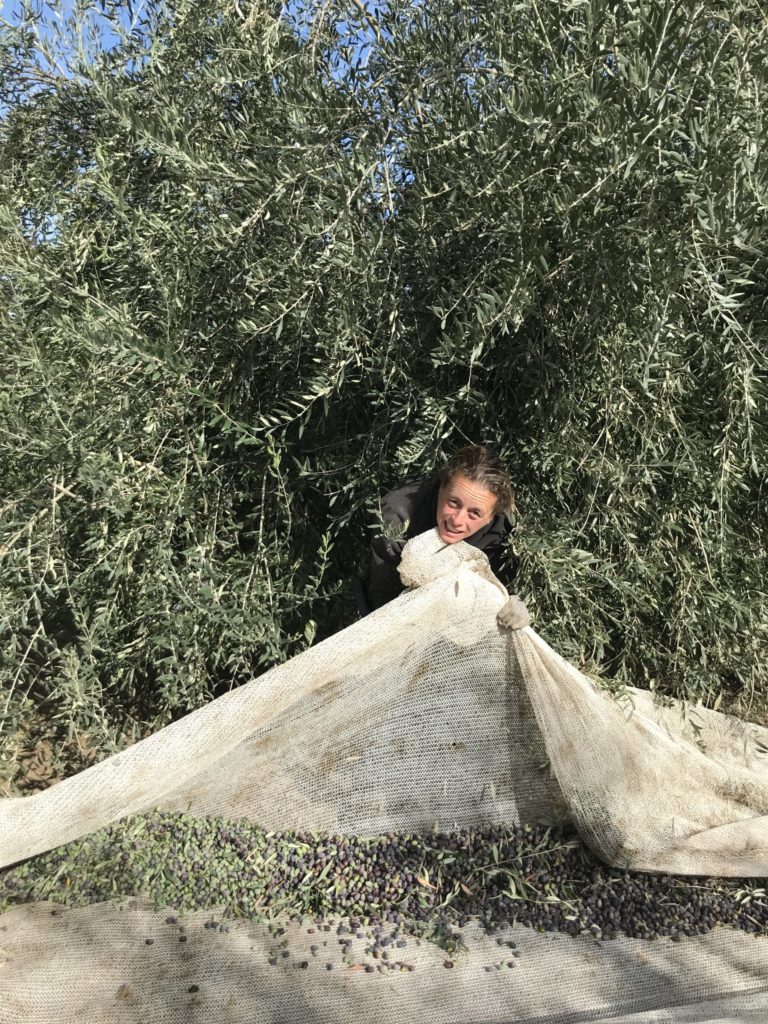
Other things on the farm:
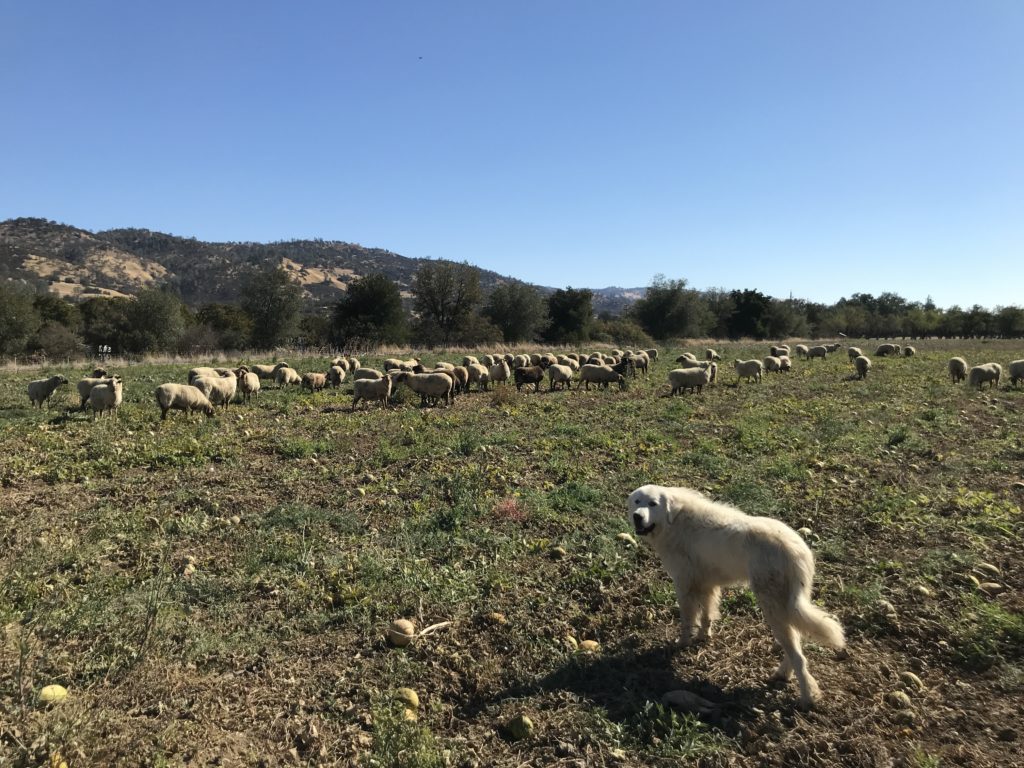
The sheep are happily polishing off the last melon field and the chickens are in the peaches.
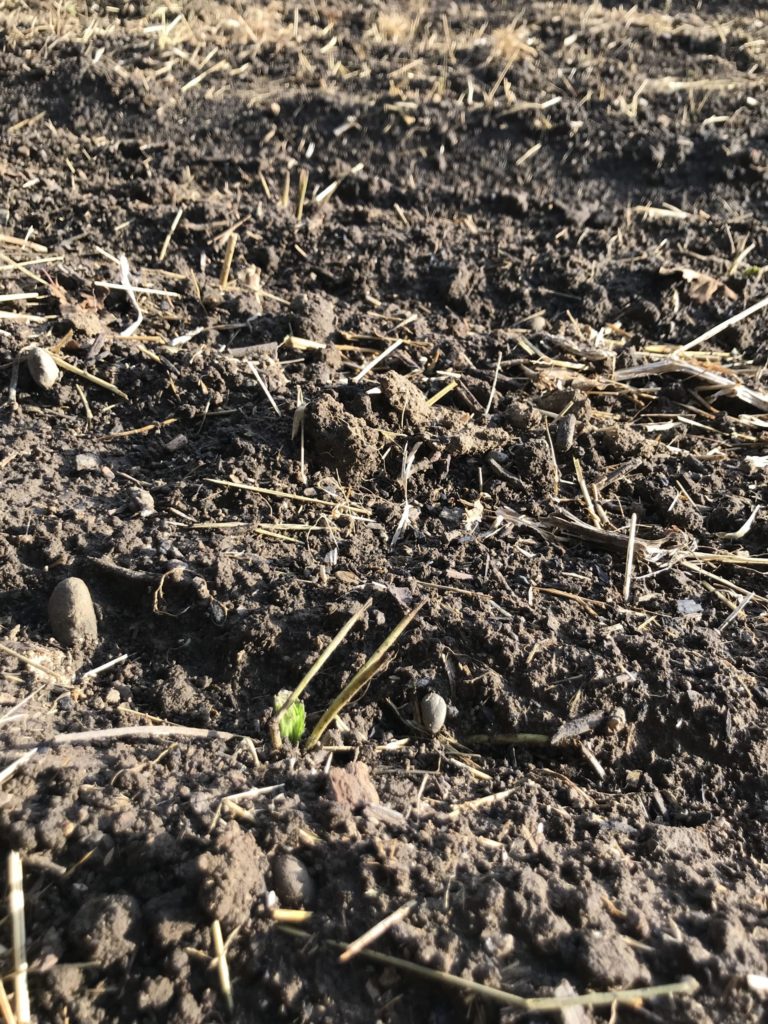
Strawberry transplants are here and in the ground! They don’t look like much now, and they’re a bit hidden in the other organic matter in that field, but come spring, we hope that they’re lush, green plants, loaded with berries.
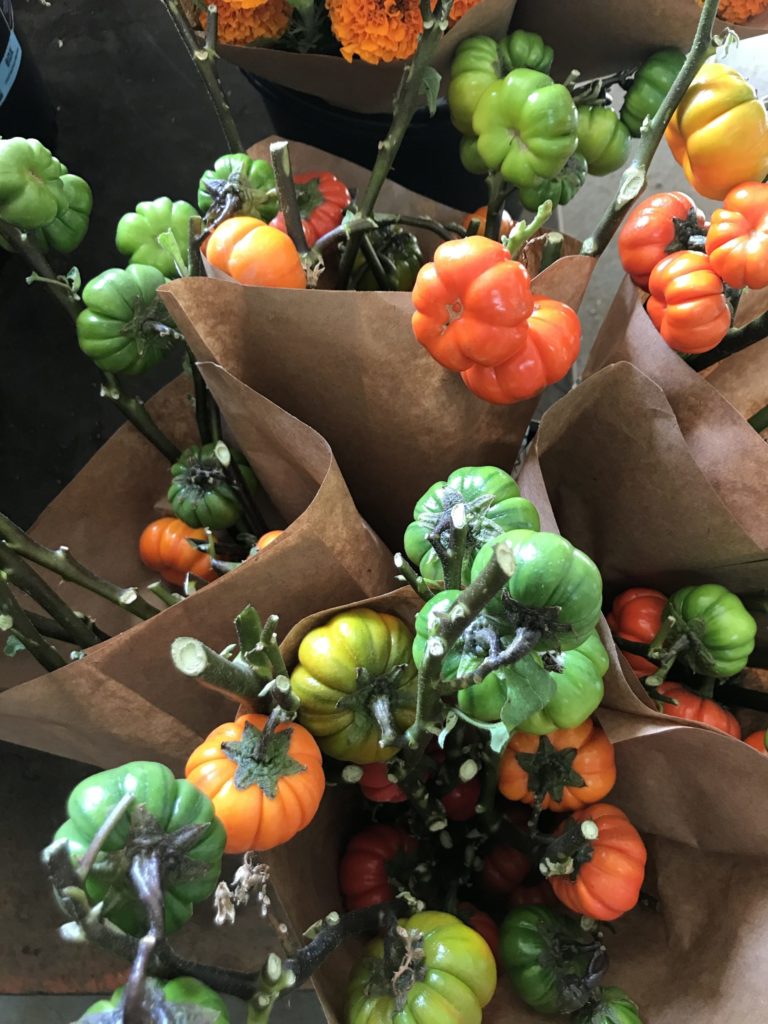
The flower team was busy transplanting too. In addition to making lots of beautiful wreaths. And check out these neat “pumpkin on a stick” – actually a type of eggplant (also going by the names Mock Tomato, Hmong Eggplant, Ethiopian Nightshade, and Chinese Scarlet Eggplant).
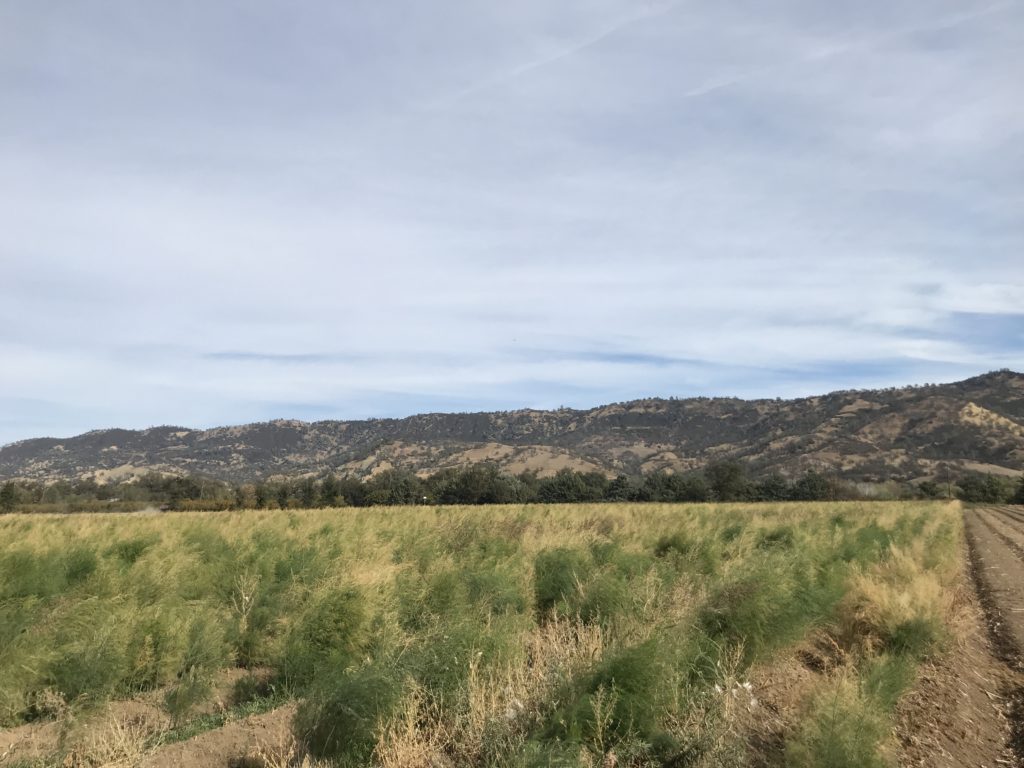
Check out the asparagus! After the last spring harvest, we let the spears keep growing so that they can photosynthesize all summer and store energy in the crowns for spring. It looks like a field of ferns! We’ll mow them down soon and then they’ll be dormant until spring.
– Elaine Swiedler, CSA Manager
